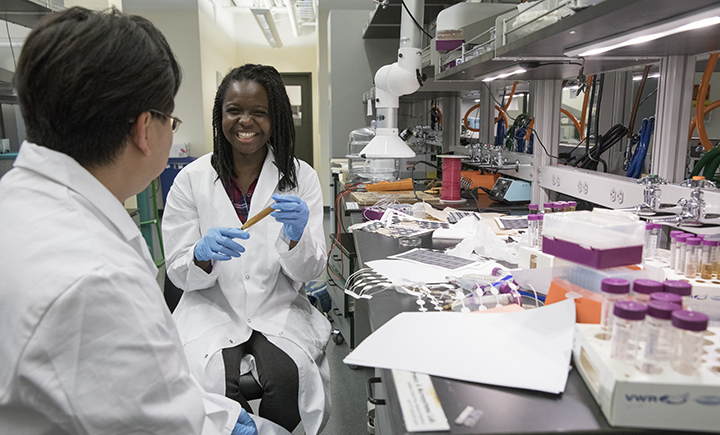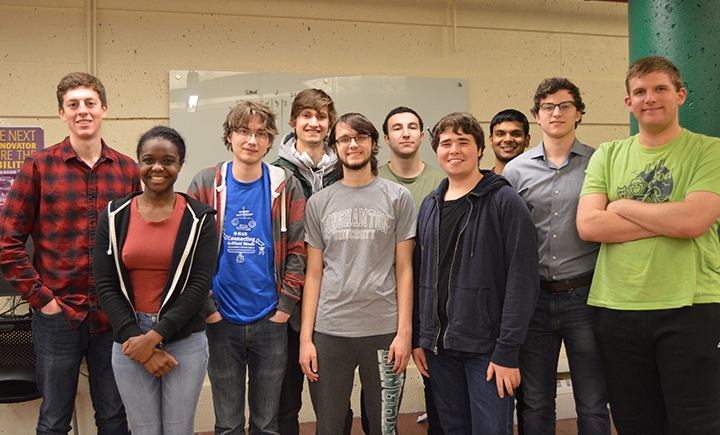LSAMP research: Electronics that disappear
Electrical engineering student Bryanna Brown spent her summer researching fuel cells that can dissolve in water after use and was awarded a special scholarship for her efforts.

“What happens after you’re done using electronics?” That’s the question electrical engineering student Bryanna Brown always asks when she first starts explaining her research.
While the answer varies, too often old electronics end up in landfills instead of being recycled or reused. Not to mention that the speed of technological advances means the newest smartphones or laptops are being disposed of at a faster rate.
Brown has been working on a way to change that, one that doesn’t require everyone to know exactly how or where to recycle their electronics but that changes the technology altogether.
Last summer, she worked with Assistant Professor Seokheun “Sean” Choi from the Electrical and Computer Engineering Department as part of the Louis Stokes Alliance for Minority Participation (LSAMP) summer research program.
“We worked on creating a temporary power source that produces little to no electronic waste,” Brown explained. “Fuel cells are devices that take in fuel in order to produce electricity; think of how a car fuel cell takes in gasoline to go.”
“The fuel cells I make are significantly smaller than car fuel cells. In fact, they are about the size of a quarter each. My fuel cells also use bacterial respiration as a fuel source instead of gasoline. Since they are made of dissolvable paper, after being utilized they can be soaked in water and that will cause them to disintegrate into natural materials before your eyes.”
For Brown, the research was a perfect combination of her interest in biology and her electrical engineering major.
Brown is a transfer student from Hempstead, N.Y. She says she originally started the engineering program at SUNY Oswego but felt that Binghamton University would be a better fit for her academically, personally and because Oswego was “terrifyingly cold.”
Although she says Binghamton is still pretty cold.
Since starting the program she’s been a part of the Binghamton Mars Rover Team, was recently inducted into the electrical engineering honor society Eta Kappa Nu and serves as the Fundraising Chair of the National Society of Black Engineers.
She’s finishing up her junior year and plans to continue on at Binghamton for her master’s with the 4+1 accelerated program with the ultimate goal of being a professor.
“There have been a number of professors, both at my former school and this one, who have inspired me to want to share my knowledge with others. After completing my master’s, I would like to first work in industry for some years in order to gain hands-on engineering experience so that I can better teach my students about the engineering field.”
Brown’s summer research got the attention of the former Watson School director of diversity programs, who successfully nominated her for The Parris Student Support STEM Scholarship.
Established in 2004, the scholarship is awarded to rising sophomore, junior or senior students with financial need, federal work-study eligibility and academic merit. Tonya Parris ‘92 founded the scholarship program for students from disadvantaged backgrounds who are pursuing degrees in STEM disciplines at Binghamton University.
Brown’s most recent research, as well as research that she has done in the past, has given her the opportunity to present at a variety of research competitions, something she has been doing since she was in 10th grade. She recently competed in the Collegiate Science and Technology Entry Program (CSTEP) Oral Research Competition where she won first place in the category of Engineering and Material Science for her project on dissolvable power sources.


